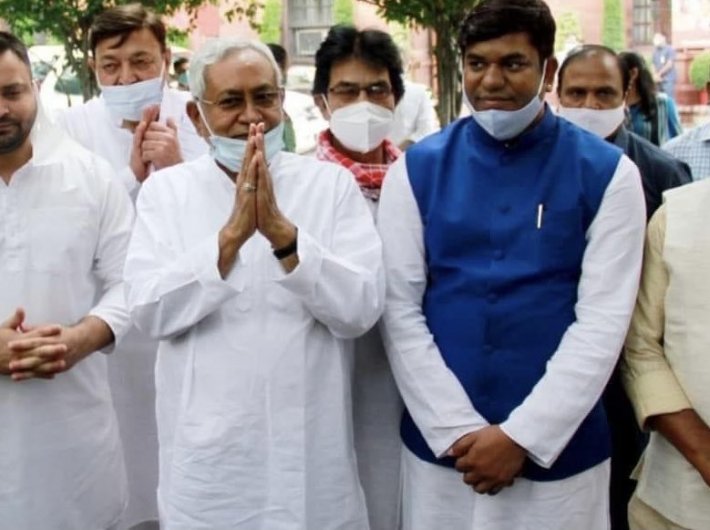There is now an increasingly growing demand, cutting across parties, to have the caste enumeration in Census 2021. An all-party delegation from Bihar met the prime minister in this regard recently. The last census in which all castes was counted was way back in 1931. In post independence India, the numbers of SCs and STs are counted, and the rest are counted as ‘general category’. The ostensible reason for the present demand is that for ensuring the welfare programmes meant for the underprivileged sections reach them, one must know their numbers, location, occupation, and several other details. Sounds all fine. But let us dive deep beyond surface and find what is the intent and what could be its unintended consequences.
Caste undeniably continues even today as an important sociological identifier in India. Growing urbanization and factors of development have made a difference by evolving alternative social stratifications in terms of various other groupings and class, which are more egalitarian, lessrigid, and orthodox. However, voting behaviour still continues to be largely influenced by caste, and identity politics is deeply entrenched. Caste-based politics revolves around reservations in jobs and educational institutions. Reservation in jobs and educational institutions funded by government are given to three groups: SCs, STs and Other Backward Classes (OBC). Originally reservation was only given to SCs and STs (intended for limited period of ten years originally which has been extended many times till date), but was later extended to OBCs in 1992 after the implementation of the Mandal Commission report.
It may be noted that the Constitution of India states in Article 15(4): "Nothing in Article 15 or in clause (2) of Article 29 shall prevent the State from making any special provision for the advancement of any socially, and educationally backward classes of citizens of or for the Scheduled Castes and the Scheduled Tribes”. Article 46 states that "The State shall promote with special care the educational and economic interests of the weaker sections of the people, and, in particular, of the Scheduled Castes and the Scheduled Tribes, and shall protect them from social injustice and all forms of exploitation.” So, the operative words for affirmative action, for whom the demands are now being made, are enshrined in the Constitution as socially and educationally backward classes, weaker sections etc. To equate these segments with castes is oversimplification of dynamics of development and growth. Eminent sociologist Max Weber, whose study of caste in India is widely accepted, made distinction between class and status, identifying caste as the latter.
India needs affirmative action at the bottom of pyramid. No doubt on that. For that free and universal access to key enablers like education, health and employment is a must. These should be really deemed as fundamental right of any citizen. Basic facilities like ration, electricity, cooking gas, sanitation, piped water supply, internet must be accessible by all at affordable rates. The state must try to be an equal opportunity provider, by making level playing field for all. Special initiatives must be undertaken to uplift the bottom of pyramid, who may or may not correspond to bottom of caste hierarchy. For example, a physically handicapped or mentally challenged person, irrespective of caste, needs affirmative support. Women need more empowerment to compete equally with men, irrespective of caste. A jobless youth needs skills for getting into job, irrespective of caste. A broader macro affirmative action could incorporate universal basic income for all and unemployment allowance for youth irrespective of caste.
While a caste census and its logic givegood soundbite, it will legitimize and strengthen caste identity. What is more worrisome is that with estimated 52% of population belonging to backward castes, there will be a clamour to increase it beyond existing 27% and taking total reservations much above 50%. The Supreme Court of India ruled in 1992 that reservations could not exceed 50 percent, anything above which it judged would violate equal access as guaranteed by the Constitution. It thus put a cap on reservations. However, the recent amendment of the Constitution exceeds the 50% cap and also there are state laws that exceed this 50 percent limit, and these are under litigation in the Supreme Court. For example, in the state of Tamil Nadu, the caste-based reservation stands at 69 percent.
The caste census looks an innocuous reasonable demand to direct state’s policies intended for affirmative action. But once it is done, the consequences could be totally different. Caste politics will take the centre stage and the narrative will boil down to pro- or anti-reservations. First let us grow, increase job opportunities instead of focussing on distribution of opportunities based on an ancient stratification called caste. India is now at a demographic sweet spot. Let us channelise this into building a great nation rather than creating fissures in the name of caste. An aspiring superpower with $5 trillion dreams can ill afford to get itself derailed by an agenda of divide and rule.The demand will only help caste-based parties to restructure, revive and thrive by exploiting gullible voters who can be swayed with emotions and fear around identity-based entitlement.
Mishra is a policy analyst and columnist.
